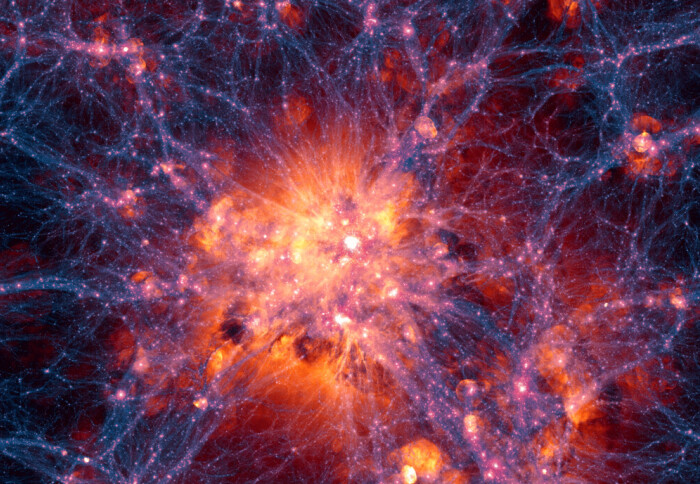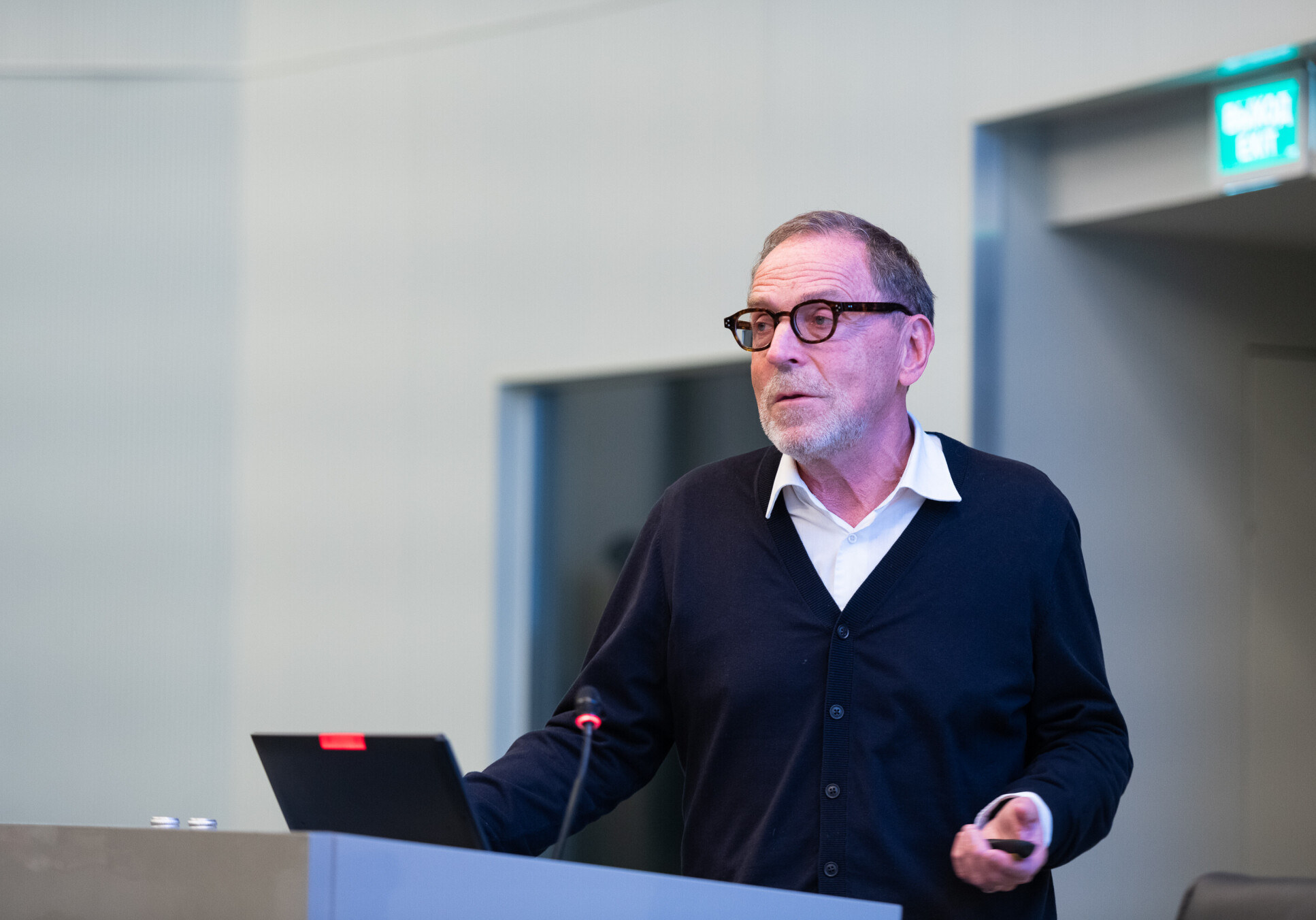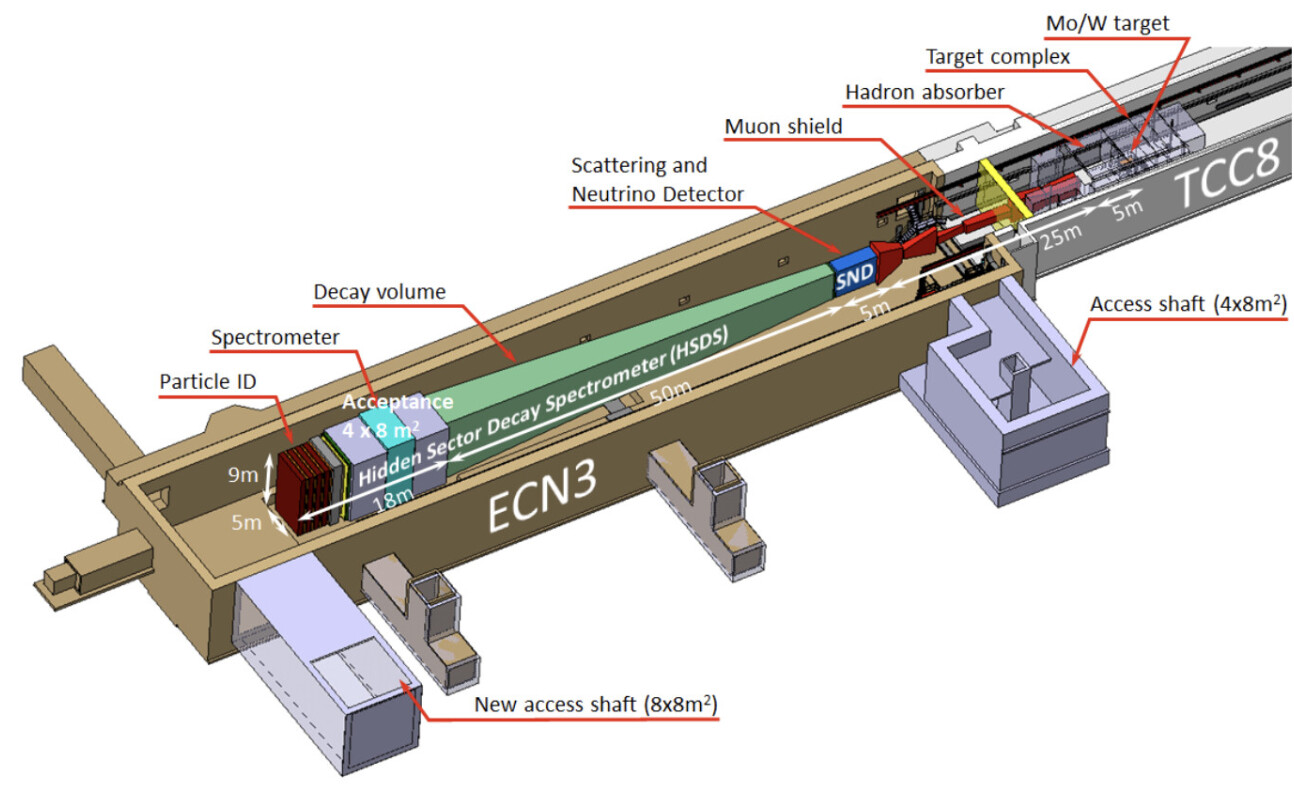Imperial scientists lead new search for hidden particles at CERN
by Jacklin Kwan

Imperial physicists are leading a new experiment that could discover particles never seen before.
The project could help answer many prevailing mysteries in modern physics and expand humanity’s understanding of fundamental science beyond our current guiding theory of particle physics – the Standard Model.
To do this, CERN, the European Organisation for Nuclear Research, have approved the building of a new facility where the project will be based. Construction is expected to start in 2027 and will herald the start of a new search for fundamental particles beyond the Higgs boson.
These so-called ‘hidden sector particles’ have so far evaded all previous attempts to observe them and interact very weakly, if at all, with the particles of the Standard Model.
Professor Andrey Golutvin from the Department of Physics at Imperial College London is leading the Search For Hidden Particles (SHiP) experiment, an international collaboration between 54 institutes in 18 countries.
The approval of SHiP marks a new era in the search for hidden sector particles. Professor Andrey Golutvin Department of Physics
Professor Golutvin said: “The approval of SHiP marks a new era in the search for hidden sector particles. SHiP has the unique possibility to solve several of the major problems of Standard Model of particle physics and we have the prospect of discovering particles that have never been seen before.”
Weakly-interacting hidden particles
The SHiP experiment is designed to be very broad in its search, looking for a range of particles that only interact very weakly with regular matter and could help scientists solve unanswered questions in physics.
Very weakly interacting particles that the experiment would be sensitive to include candidates for dark matter, which is thought to be a form of matter that does not absorb or emit detectable radiation.
Researchers have inferred its existence by astronomical observations, such as light bending around large galaxy clusters on its way to our planet, however, no dark matter has ever been directly detected.
Other new particles that SHiP could find include particles that could explain other mysteries of the Standard Model – why there currently exists much more regular matter than antimatter, known as the matter-antimatter asymmetry – as well as the patterns of properties that are seen in particles such as neutrinos.

Senior CERN physicist and technical coordinator of SHiP, Dr Richard Jacobsson, said: “We recently understood that the experiment could be housed in a new location, which has overcome several of the challenges in the design. I'm delighted that CERN has recognised the potential of this experiment to transform the landscape of particle physics and has agreed to build the facility needed for the experiment.”
Using proton beams to unveil a new frontier
Located near Geneva in Switzerland, CERN is home to some of the world's largest and most complex scientific instruments, which are used to study the basic constituents of matter: the fundamental particles.
The SHiP experiment will use the high-intensity proton beams from CERN’s Super Proton Synchrotron (SPS).
A proton beam will be directed to hit a fixed target and will produce a variety of particles, including charm mesons and photons. When these particles decay or interact, they can produce the hidden particles SHiP is looking for.
 The energy and intensity of the SPS beam will enable huge numbers of well-known particles to be produced, meaning that SHiP will be able to make the world’s best searches for new hidden particles.
The energy and intensity of the SPS beam will enable huge numbers of well-known particles to be produced, meaning that SHiP will be able to make the world’s best searches for new hidden particles.
“We first proposed this experiment ten years ago, when we understood there was no immediate evidence for new particles in the data from the Large Hadron Collider,” Professor Golutvin said. “Hidden sector theories give us the prospect of solving problems of the Standard Model and as time has passed, and we have not observed new particles at the energy frontier, the case for exploring this area has been getting stronger and stronger.”
Hidden sector theories give us the prospect of solving problems of the Standard Model... Professor Andrey Golutvin Department of Physics
The SHiP experiment will begin collecting data in 2030, and the new facility will increase the number of potential interactions by a factor of 1,000 compared to what is currently possible at other experiments at CERN’s Large Hadron Collider.
Imperial’s contribution to the project will not only include leading the collaboration, but also developing a magnetic shield that will help screen out background noise from a specific type of subatomic particle called muons.
Article text (excluding photos or graphics) © Imperial College London.
Photos and graphics subject to third party copyright used with permission or © Imperial College London.
Reporter
Jacklin Kwan
Faculty of Natural Sciences